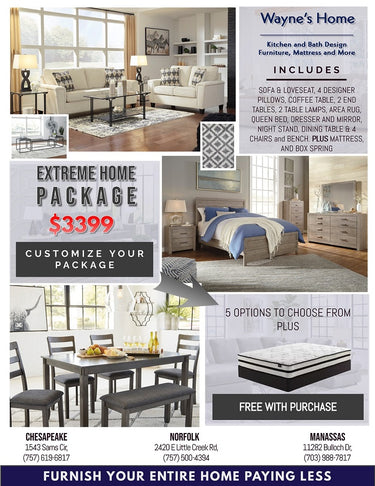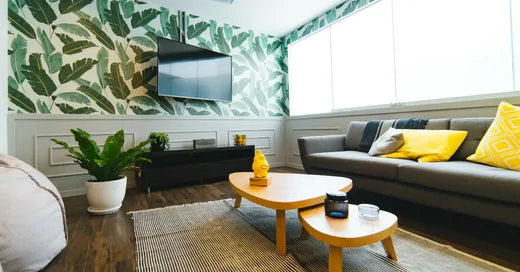Home decor and interior design is deeply personal and can be challenging, but also very enjoyable. There are so many home decor styles, ideas, and trends that allow you to express yourself and discover optimal comfort. In today’s post, we’d like to take some time to discuss two very opposite current trends — minimalism and maximalism. Minimalism focuses on reducing clutter and things to open up space and create a clean and simple environment. On the other extreme, maximalism focuses on streamlining and organizing the full home. Today, we’ll take a look at how to discover the beauty in either one to optimize the comfort and function in your home.
MINIMALISM VS. MAXIMALISM
Minimalism represents clean, plain, and cool spaces while maximalism is brave, bold, and hot. While minimalism is efficient and gentle, maximalism is exaggerated and flamboyant. Interior design styles lean to one side and neither of the styles is better than the other but comes down to personal preference and the space being used. The flow, design, and style are up to the interior designer and the homeowner. A minimalist may view maximalism as overwhelming and excessive, while a maximalist may see minimalism as plain or boring. We’d like to show you the differences between them and let you decide which you prefer.
In order to clearly differentiate minimalism and maximalism from each other, we’ll review eight different points. Knowing the details may help you to choose the best one for you.
DIFFERENCES BETWEEN MINIMALISM AND MAXIMALISM IN HOME DECOR
- Color — Color can clearly differentiate between minimalism and maximalism. In maximalism, the design is full of bright and brave colors, textures, and patterns. The place may look like a wild compilation of all the colors in the palette. On the contrary, minimalism contains only neutral colors and earth tones. A minimalist room would feature only two or three colors.
- Lines — The structural design reveals so many things about minimalism and maximalism. Maximalist designs will feature so many obliques, patterns, and intricate details. But, minimalist design relies on simple, clearly defined, and neat lines. The difference between them can be described as the contrast between neat and complicated.
- Walls — A maximalist design leaves no open space on the walls. Walls will be full of paintings, pictures, artworks, and other wall accessory details. There may be some bright and different patterned wallpaper, shelving displays, and textures. Whereas minimalist walls will just be plain, nearly naked. Many walls will be empty, while others may have one or two simple pieces of art or framed photos.
- Furnishing — A maximalist design, as you may guess, will be full of very different types of furniture. A maximalist room is full of bold pieces that may not be a part of the same furniture set, but there is a kind of harmony between them. Massive, curled, and bright furnishing is very important for the maximalist design. Minimalist design, on the other hand, includes fewer furniture and accents. Every piece has a specific purpose, and all the accessories are designed efficiently.
- Floors — Floors are one of the parts of the house other than the ceiling and walls where the maximalist design will express full effort. The floors are like a canvas for maximalists. There are generally colored tiles, two or more colored rugs, or marble designs. But, minimalist design homes are generally plain or neutral. There may be cement or neutral colors of tiles or hardwood.
- Ceilings — As you may easily guess, maximalist ceilings are another opportunity for design, like floors and walls. Maximalist ceilings may be different and darker color choices like black or other dark colors. Chandeliers or lighting are also fancily exaggerated. Minimalist ceilings are generally plain and feature only simple lighting options.
- Patterns — A maximalist home is rich with bold patterns and prints. They will likely be colorful and brave. On the contrary, minimalist designs will only have one or two shades of neutral colors on plain and simple patterns.
- Empty Spaces — For a maximalist design, every single space is an opportunity to feature some accents, accessories, or decorative objects. But minimalism design intentionally leaves empty spaces. To achieve a minimalist look, unwanted or unimportant furniture or accents are removed from the room.
We hope that by understanding the stark differences in these eight interior design elements will help you understand the differences between the extremes minimalism and maximalism. Aside from designing, you will need different furniture and accents for applying the design you desire. Simply decide if you’d like to go for a minimalist or maximalist look, or something in between, then let us, Wayne’s Home Company, help you with selecting your furniture. Simply reach out to one of our sales representatives, visit us online, or stop by our Norfolk furniture store.







